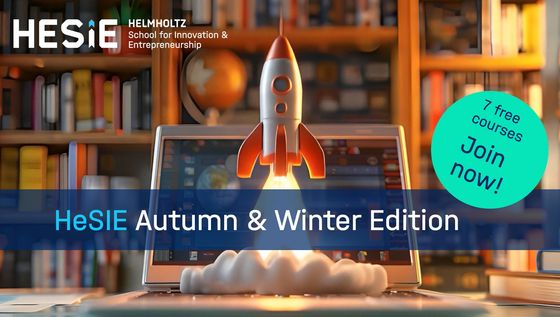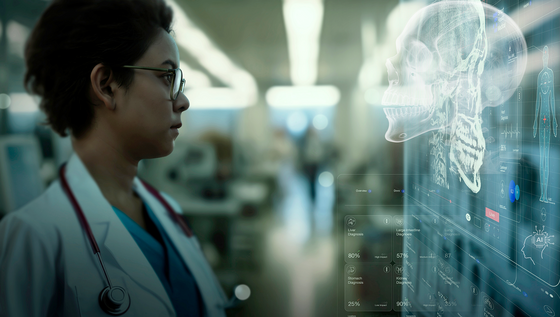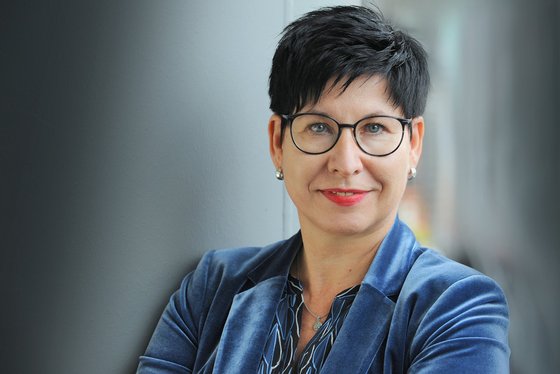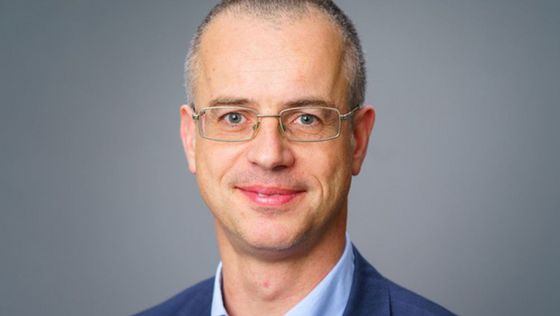|
||||||||
|
||||||||||||||||||||||||
|
|
This summer, the European Commission published its proposal for the EU budget from 2028 onwards – and for a stand-alone EU framework programme for research and innovation (FP10). In its statement, the Alliance of Science Organisations pointed out the need for readjustments and made recommendations.How research topics are dealt with in the new European Competitiveness Fund will be a particularly sensitive issue in the upcoming negotiations. Speaking of competitiveness: This week in Brussels, we are focusing on the innovative power of large research infrastructures. They can serve as a platform for long-term cooperation with industry and thus contribute significantly to EU competitiveness. At our annual event, we bring together research, politics and industry to discuss how we can best exploit this potential. Enjoy reading! |
|
|
|
|||||||||||||||||||||||
|
|
|
|||||||||||||||||||||||
|
|
|
Can your personal medical history be used to predict the health problems you might face in the next two decades? Researchers from EMBL, the DKFZ, and the University of Copenhagen have now shown that this is possible. They have developed a generative AI model that uses large-scale health records to estimate how human health may change over time; it can gauge the risk and timing of contracting over 1,000 diseases and predict health outcomes a decade in advance. This new generative AI model was custom-built on the basis of algorithms similar to those used in large language models (LLMs) and trained on the anonymized data of 400,000 patients from the UK Biobank. Researchers also successfully tested the model using data from 1.9 million patients in the Danish National Patient Registry. The model is one of the most impressive demonstrations to date of how generative AI can model human disease progression at scale and be tested on data from two completely different healthcare systems. Like weather forecasts, this new AI model delivers probabilities, not certainties. It doesn’t predict exactly what will happen to a given individual, but it does offer well-calibrated estimates of how likely certain conditions are to occur over a given period (e.g. the chance of developing heart disease within the next year). These risks are expressed as rates over time, similar to forecasting a 70% chance of rain tomorrow. Some outcomes, like the risk of hospitalization after a major event – for example a heart attack – can be forecast with a high level of confidence, while others remain more uncertain. Similarly, forecasts covering a shorter period of time tend to be more accurate than long-range ones. In the future, AI tools such as the one described here, once trained on more representative datasets, could help doctors identify high-risk patients early on. With ageing populations and rising rates of chronic illness, being able to forecast future health needs could help healthcare systems plan better and allocate resources more efficiently. But much more testing, not to mention robust regulatory frameworks, will be needed before AI models can be deployed in a clinical setting. Interview with Moritz Gerstung AI model predicts disease risks decades in advance (DKFZ) Learning the natural history of human disease with generative transformers Nature 2025
Magma displacement triggered tens of thousands of earthquakes Porous organic framework improves lithium-sulfur batteries |
|
The most fascinating thing is the diversity of topics at the HZI: from the emergence of new infectious diseases to strategies for combating antibiotic resistance, to the One Health approach, which also takes climate change scenarios into account. In critical situations like pandemics, you really feel the intensity in the press office – every hour counts, and research results need to be shared quickly, accurately, and comprehensibly. This combination of adrenaline, responsibility, and team spirit inspires me. For me, the core of my work is communicating research in a way that provides guidance and builds trust. Bridging the gap between science and society together with my team is challenging and, at the same time, the most meaningful part of my work.
I would launch a major international cultural, scientific, and civic project on infection research – because when it comes to microbiology and the safe handling of infections, education and awareness are still sorely lacking in our society. As a highlight, I can imagine an interactive exhibition with new narrative formats: VR experiences that immerse visitors in historical and future scenarios; artistic perspectives; and the voices of affected individuals and researchers worldwide, which help make the topic more tangible. This would be supplemented by films, podcasts, social media, and citizen science projects. Schools and daycare centers would receive free educational materials. The central question would be: How can we disseminate infection research in such a way that it doesn’t make people afraid, but instead empowers them to act?
I would invite Lydia Rabinowitsch-Kempner – one of the first female professors in Berlin and a pioneer in tuberculosis research, now almost forgotten. In 1920, she took over as director of the Bacteriological Institute in Moabit. I’ve always been impressed by her courage to assert herself in a male-dominated field of science – all the more so because she was marginalized during the Nazi era due to her ethnic roots. For dessert, we would have rice pudding – a tribute to her field of research, as tuberculosis was often transmitted through unpasteurized milk. Since I write science thrillers as a side job, I would also invite Stephen King. I would talk with him about suspense in science communication – and how pure facts can become stories that move people. That would be an exciting roundtable. |
|
|
|
History tends to repeat itself. In 2010, rare earths were already on everyone’s lips. The press reported virtually daily on dysprosium and neodymium – and on Europe’s dependence on supplies from China. Back then, China had used its monopoly on rare earths as a geostrategic tool for the first time and imposed an export ban. The resulting panic in industry and politics made it clear that the role of raw materials as the basis of industrial production had been ignored for too long. Initially, this led to a search for alternative sources that were available in the short term. Geological exploration boomed and it quickly became clear that there were a large number of major rare earth deposits around the globe – including in the European Union. Not only the economy, but also governments reacted quickly to their scarcity. In 2010, the German government formulated a “National Raw Materials Strategy,” promoted research and innovation through targeted funding programs, and established two new institutions: the German Raw Materials Agency in Berlin, which gathers data on raw materials and advises German industry; and the Helmholtz Institute Freiberg for Resource Technology, which pursues research on technologies for the efficient use of mineral and metallic raw materials. Raw materials research is now an integral part of the Helmholtz Association’s portfolio. One might assume that we’d learned our lesson from the “rare earth crisis” in 2010 and that by now, 15 years later, China’s monopoly would have been weakened. But guess again. Prices for rare earths normalized as early as 2012 with the easing of Chinese export restrictions. Since importing rare earths from China was once again cheaper than developing alternative sources of raw materials, the need for a strategic alliance between industry and politics to ensure a resilient supply of raw materials no longer seemed urgent. As a result, we failed to diversify supply chains, establish strategic raw material reserves, develop domestic extraction and processing structures, invest in systematic recycling, or establish substitutes for rare earths. Even the promising results of publicly funded research – for example, on the recycling of neodymium magnets – never found their way into domestic industry due to a lack of buyers and capital. And so far, the EU regulation on critical raw materials ratified in 2023 hasn’t changed things. As a result, China’s dominance throughout the rare earth value chain has actually grown over the past 15 years. And so, inevitably, we see history repeating itself: since the beginning of 2025, China has been using its monopoly as a geostrategic tool once again – this time in a tariff war with the US. And once again, industry and politics appear ill-prepared to respond. In the wake of this second supply crisis, it is now worth asking whether publicly funded research in Germany can play a different part in 2025 than it did in 2010. Fifteen years ago, pioneering work had to be done first: since research into raw materials hadn’t been a priority for over 30 years, new skills and capacities had to first be established. These are now available, unlike in 2010. Consequently, raw materials research will require far less prep time in 2025 – and rapid advances can be expected. A broad portfolio of attractive research topics is available, ranging from materials research for substitution to the establishment of a sustainable circular economy for rare earths. However, there is one major obstacle that will continue to limit the effectiveness of research and innovation in 2025: the lack of a suitable research infrastructure, which is essential for rapidly scaling novel raw material technologies and preparing them for transfer to industry. Innovation requires investments, and this is especially true for research into raw materials in Germany. The time for making these investments is running out if we don’t want to have to worry about the use of rare earths as a geostrategic tool in the future. |
Published by: Helmholtz Association of German Research Centres, Anna-Louisa-Karsch-Str.2, 10178 Berlin Editors: Sebastian Grote, Franziska Roeder, Martin Trinkaus Photo credit: Phil Dera (Editorial) No subscription yet? Click here to register If you no longer wish to receive our newsletter, simply click here: Unsubscribe © Helmholtz
|
![[Translate to Englisch:] [Translate to Englisch:]](https://www.helmholtz.de/assets/helmholtz_gemeinschaft/_processed_/0/2/csm_2023_Kristine_August_600x600_1d78a59dce.png)



